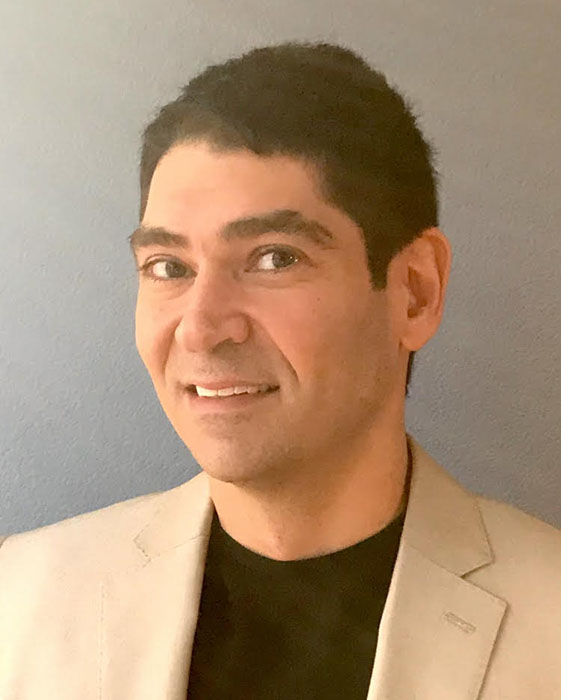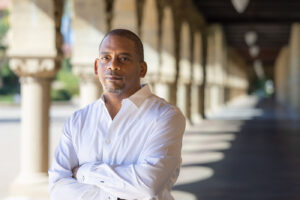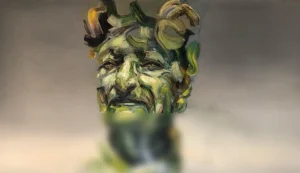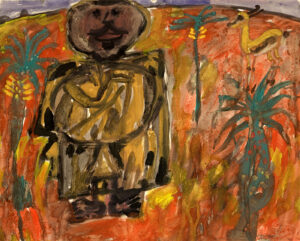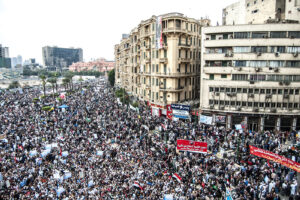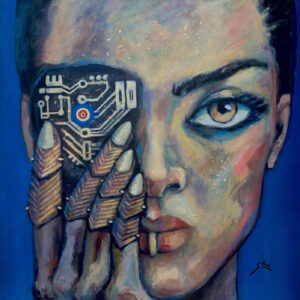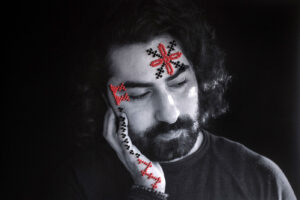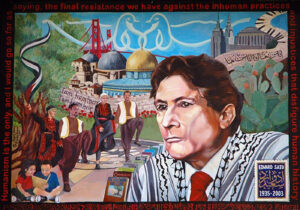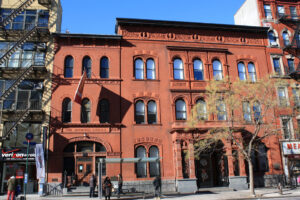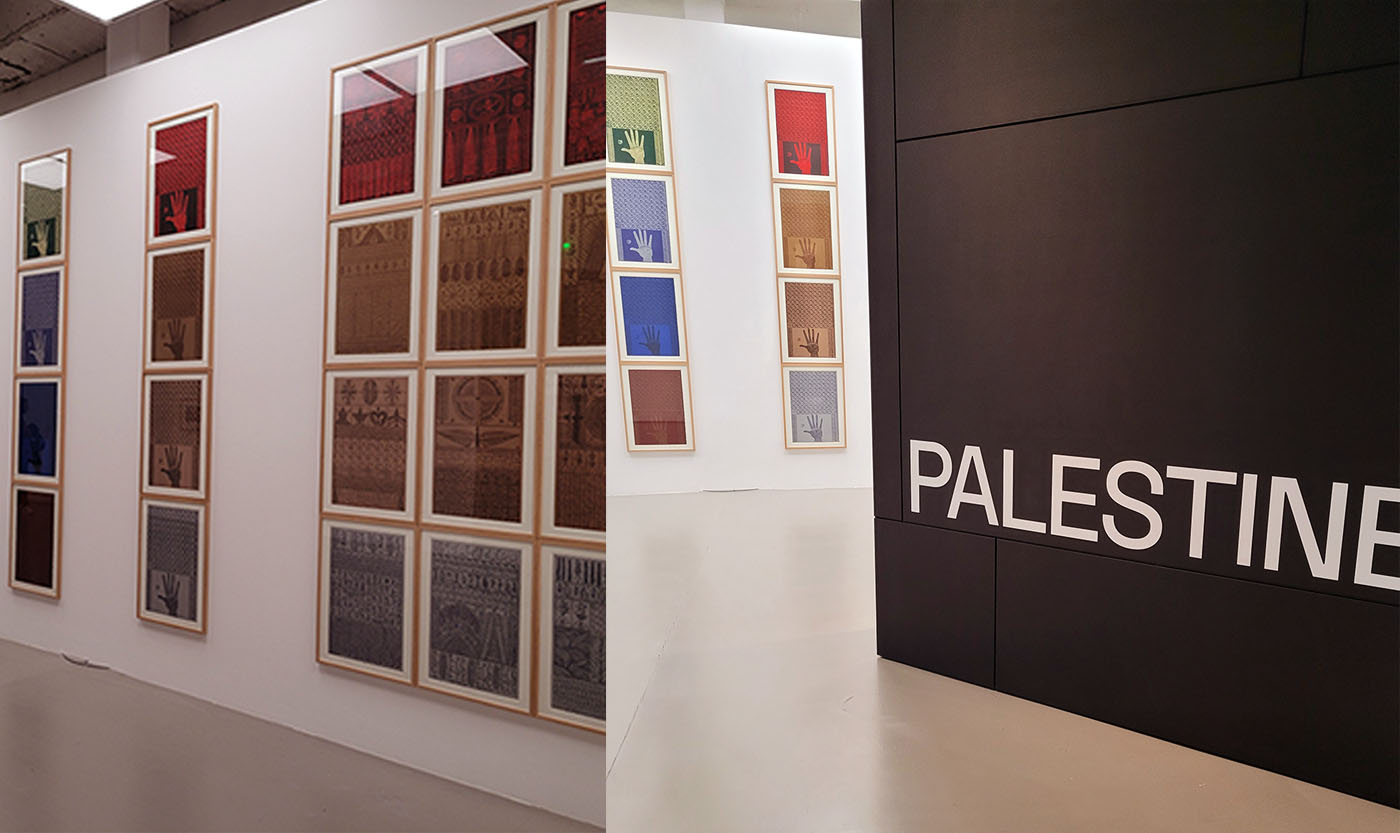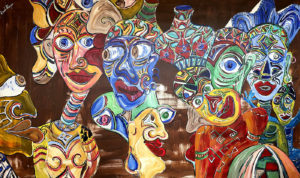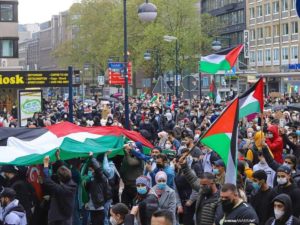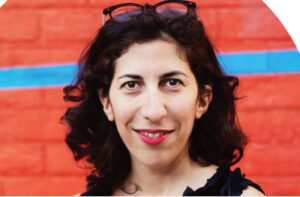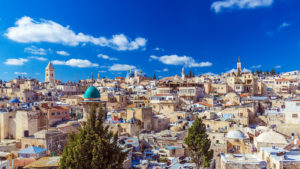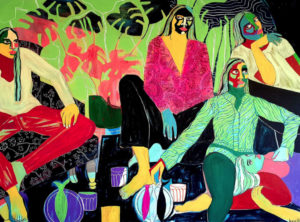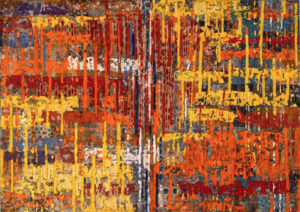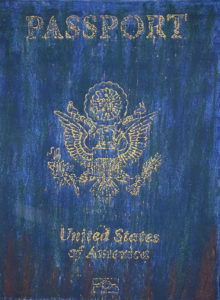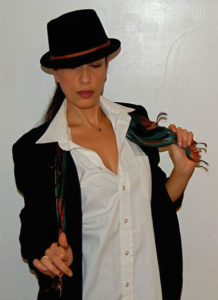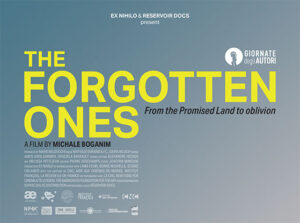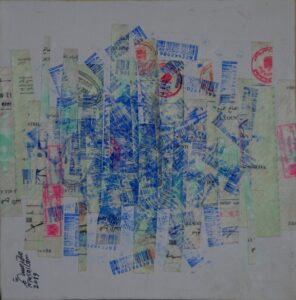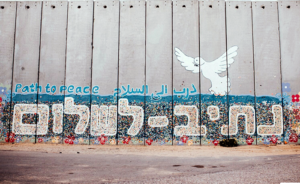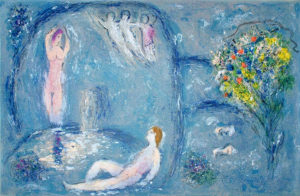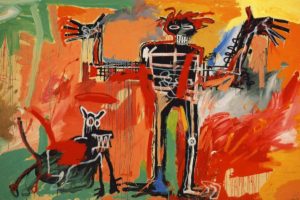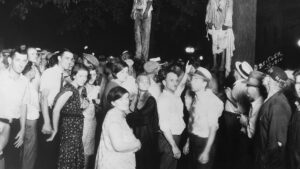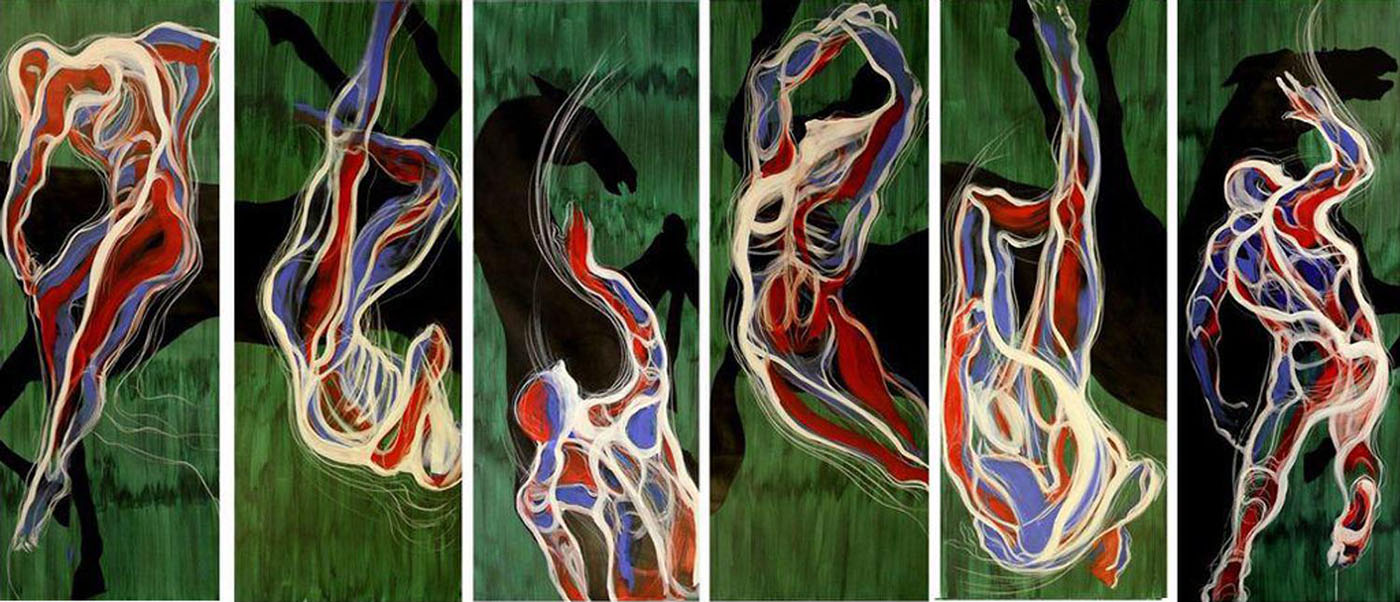
Regardless of our individual ethnic backgrounds, politics or religious beliefs, Iranians in the United States are unified by the common experience of being fundamentally alienated — legally white, but socially brown.
Bavand Karim
The first time I heard the term “ethno-futurism” was years ago at a poetry reading. Not in the language of the poem itself, but in the critique of the poem. This critique was made in the form of an analysis, but it was essentially a search for knowledge about the ‘truth’ within the literature. Ethno-futurism as a concept is exactly that – a critique – a search for knowledge in which the largest concern is the truth of ourselves.
Accordingly, the ethno-futurist perspective occupies a unique space within the transitional periods of human cultural history. As a civilization’s cultural monoliths expire and new traditions emerge, the ontological, social, and historical vantage points of reality shift. The long-term ripples of events like the creation of markets in the 13th century or the French revolution can still be felt today. As mankind continues to evolve through technological ages, a philosophical approach is needed that considers the pre-historical pasts and potential futures of national and international cultural identities as part of a larger investigation into the concept of humanity. These are the large-scale approaches of ethno-futurism, but sometimes much smaller shifts occur, within the microcosms of our lives.
A micro-shift occurred in my life on a summer evening in 2009, after a basketball game, when an acquaintance of many years engaged me in a conversation. After a bit of small talk, he leaned over, and with an inquisitive, arguably prosecutorial expression he asked me, “So, where are you from?” To be fair, this is a common question. But this instance felt different, as if meant to draw boundary lines between us. And one of the main reasons I remember how I felt in that moment is because of where it took place: on the basketball court.
Generally speaking, sports represent a great equalizer, impartial and objective, where only athletic performance matters. As a lifelong basketball player, the game has traditionally been a safe space for me, where the perceived limitations of my ethnicity and socio-economic status were no longer determining factors in my success. On that particular summer evening, that group was one that I had played with, in the same gym, for many years. I was the only Iranian American among a group of white American players. To me, the games represented a white-dominated space where there was actual fair play in terms of social hierarchy, and I did not feel discriminated against, dominated, or rendered inferior by what I perceived as the inherent exclusiveness of whiteness. On the contrary, I felt accepted in that space, and had even been celebrated for my agility, which is exactly why my acquaintance’s ostensibly innocuous question felt like such an insidious accusation — it threatened to alienate me this group that I valued so deeply. In that moment, I certainly felt like an outsider. Worse yet, it shattered my idealist notion that an unbiased, non-partisan space could exist at all.
As my avant-garde professors from the late ’90s would say, “there’s a lot to unpack there,” especially in terms of identity, representation, and self-acceptance. What I did not realize at the time was that I needed to take a larger perspective than assigning myself to a space within the cultural binary of whiteness v. everything else. There is a better answer to my truth. But for a number of reasons, it is just harder to find.
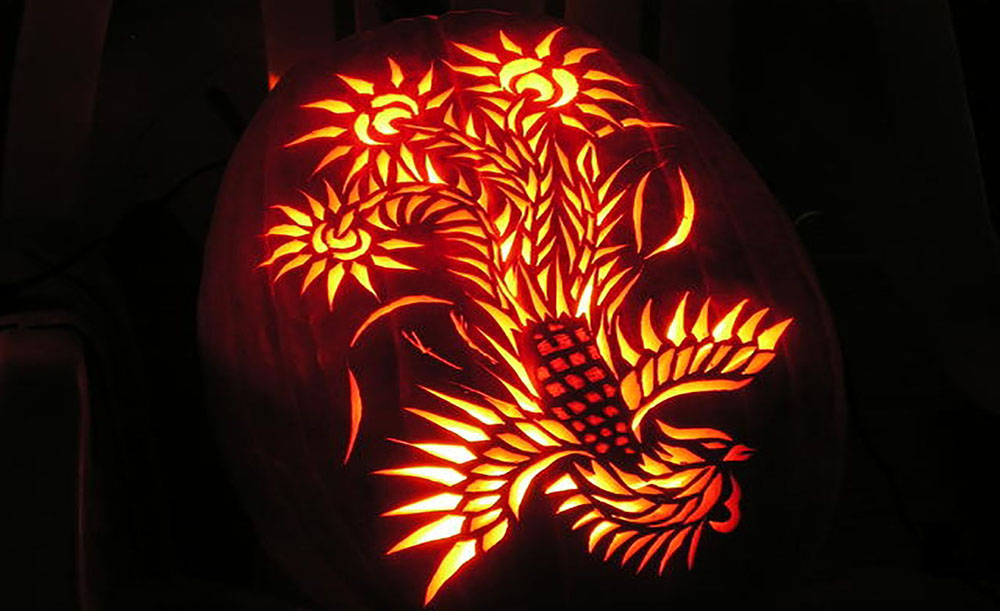
My answer to “where are you from” is a complicated one. I was born in New Mexico. I was raised in Texas. I live in Los Angeles. But none of these are ever the correct answer, because when people ask me — who is ostensibly white but apparently not quite white enough to pass as American — “where are you from,” it is never about hometowns or alma maters or favorite teams.
These individuals want to know my ethnicity, to understand it as a window into the truth about me, and by association, affirm some truth of their own. They want to hear that I am Iranian, even if I am not from Iran. And this in turn makes me wonder, if out of nothing other than a sense of self-preservation, why.
America is inherently divided along any number of social and political lines, and quite prominently by race and class. When it comes to our national fixation with race, the need to define and categorize nationality and ethnicity is especially problematic for Iranian Americans, for whom legal status does not reflect social status. There is an idea of us as a cultural group, but whether or not our lived truths align with that idea is a matter of perspective and debate. What is clearer is how Iranian American identity has been defined externally by whiteness. “The idea of cultural relativism,” attorney Shirin Ebadi warns, “is nothing but an excuse to violate human rights.” Regardless of our individual ethnic backgrounds, politics or religious beliefs, Iranians in the United States are unified by the common experience of being fundamentally alienated — legally white, but socially brown.
Think about that for a second: Iranians are legally white. According to the U.S. Office of Personnel Management’s form SF-181, “A person having origins in any of the original people of Europe, the Middle East, or North Africa” is ‘white.’” This definition has repercussions: By having our identities legally jumbled into a miscellany of white and Arab nationalities, Iranian Americans are never fully granted a sense of authentic legitimacy. Speaking from experience, it can be daunting to search for a place of one’s own within America’s traditionally white cultural institutions. In the professional world, for the most part, my identity has been acknowledged by my colleagues in two forms: otherness and invisibility.
I’m not alone.
“People think because I’m from the Middle East, I’m an expert on the Middle East,” comedian Maz Jobrani jokes. “I got a friend, and any time gas prices go up, he’ll always ask my opinion about it.” Jobrani’s joking, but he’s also describing a larger problem: generally speaking, the interests and values of the average Iranian American do not align with the common public perception of Iranian Americans as a group.
In American society at large, Iranians are generally under-represented and rarely celebrated. To some, Persian-ness is rich with exotic mystique and historical depth that white American culture lacks. In another popular narrative, Iranians are hard-working immigrants chasing the American dream. This dichotomy between rich and poor reflects the larger divides in America, but it also places Iranians at two polar opposite ends of a spectrum when it comes to representation in popular culture: we are either tycoons and CEOs or bodega owners and taxi drivers. The common, middle class Iranian American family equivalent to those seen on Full House, Family Matters or Married with Children is nowhere to be found. America wants Persian rugs and cats, but it doesn’t want us — it wants Prince of Persia starring Jake Gyllenhaal. For some, whitewashing and erasure may be preferable to the negative stereotyping presented as Iranian American “reality” on Shahs of Sunset. “Low-income Iranians are under-represented,” says author Porochista Khakpour. “I get that, more than anything from Iranian American readers, when they’re like: ‘Thank you for speaking out about being a poor Iranian.’ There’s just no representation with that.”
Let’s be clear: America is a cultural melting pot where there are no rules — I mixed a tamale with my lubia polo last week and it was delicious.
Iranian-American. It is symbolically fitting that a hyphen separates our two cultural affiliations, because our lives are interrupted by a symbolic racialization that places us between the traditional binaries of whiteness and blackness. As a teenager in the suburbs of North Texas, my identity depended on who was sitting across the table. Black friends saw my whiteness first saying, “You pass for white; you’re white.” But “passing” is subjective, and manufactured whiteness is a spectrum. An even more appropriate analogy might be that whiteness is a ladder, gatekept by elusive forms of validation. “Where are you from?” is what people usually ask me when they want to determine my place on that ladder, shifting my position from “passing” to an ambiguous “brown — but not Black.” Emotionally, it is reminiscent of the 2018 film Green Book, when Dr. Shirley, portrayed by Mahershala Ali, laments “So if I’m not black enough, and if I’m not white enough … then what am I?”
A number of scholars have chronicled experiences like mine. I most recently read Neda Maghbouleh’s The Limits of Whiteness: Iranian Americans and the Everyday Politics of Race, but John Tehranian’s Whitewashed: America’s Invisible Middle Eastern Minority and Nilou Mostofi’s article “Who We Are: The Perplexity of Iranian-American Identity” also ruminate on the issues at hand. All three texts reinforce the same idea: Despite the browning that our national identity endures in the United States, Iranian Americans are staunchly rooted in a racially liminal territory, occupying a unique cultural space of our own that seemingly exists simultaneously on both sides of the threshold of whiteness.
Like many Iranian Americans, the true native culture of my household brings together the best of two worlds to create a sort of Zoroastrian Americana. We decorate a Christmas tree in December and put out a Sofreh Haft-Sin in March. We have our own unique linguistic model that mingles English words and phrases into our Farsi conversations, and vice versa. We make Persian recipes for American palettes, listen to Iranian music on the way to football games, decorate our McMansions with Persian art, and adorn ourselves with jewelry and accessories that hint at our connection to Iran. Let’s be clear: America is a cultural melting pot where there are no rules — I mixed a tamale with my lubia polo last week and it was delicious.
On a deeper level, our cultural duality is a form of defense and refuge against the endemic alienation created by the ubiquitous power of whiteness. It provides a safe place for us — a designation as “one of the good ones” — when we apply for jobs or loans, attempt to purchase homes, or seek out the best opportunities for our children. In this way, whiteness coerces us into coveting it and the privileges it signifies. The golden generation of Iranian-Americans remembers abruptly being targeted and othered after the hostage crisis in 1979. Author Firoozeh Dumas describes the shift in sentiment in her memoir, Funny in Farsi: “Overnight, Iranians living in America became, to say the least, very unpopular. For some reason, many Americans began to think that all Iranians … could at any moment get angry and take prisoners.” My generation reached adulthood in the post-9/11 zeitgeist, where racial profiling has drawn renewed scrutiny to our nationality and activities that were once simple and straightforward — like passing through customs — have become crucibles gatekept by whiteness.
“The first time I flew after September 11, I was honestly a little paranoid,” Jobrani says in one of his routines. “I was looking at my duffel bag, and I’m like, ‘Do I have anything that’s like a weapon?’ I was really paranoid they were gonna find something sharp, and I was gonna get in trouble.” He is presumably only half-joking. In a coincidence that is in no way related, my own father’s name is Mohammad and he is always randomly selected by the TSA for additional screening. He is simultaneously white and not-white; he is Schrödinger’s Citizen.
The fact is that the obligatory racial classification imposed on Iranians is a damaging form of coercion, and worse yet, deletion. The convoluted census situation is dangerous. It creates a form of alienation that has a multitude of consequences that can potentially impact Iranians’ social equity, health outcomes, and our treatment in the eyes of the law. The true harm of misrepresentation and under-counting is the increased potential for the denial of justice to the Iranian American community as we are forcibly assimilated into the very cultural paradigms that oppress us.
How can we address the discrimination we face when our own diversity is not legally recognized?
“One problem with having Middle Easterners lumped in as white is that in a lot of cases Middle Easterners are not treated as white,” says Tehranian. “When one talks about diversity hiring or when one talks about discrimination, if we’re looking at security stops at airports, for example, and we categorize Middle Eastern people as white people, we’re not going to see any data that Middle Easterners are being targeted more than anybody else. In other words, it impacts our data and makes it hard to measure discrimination. And in some cases, it’s made it hard for Middle Easterners to claim discrimination at all, because then the defense sometimes is, ‘Well, you’re white, how could you be discriminated against?’ But technically they are.”
The cultural research performed by various Iranian American authors, comedians, filmmakers, and artists offer important insight into the ways Iranian Americans are haunted by the micro-aggressive revenants of America’s colonial antecedent. Ours is a world where “Where are you from?” is always potentially much more than a friendly icebreaker; it is the gateway to disaffection, estrangement, and animosity over politics, religion, and a multitude of other manufactured differences. “I remember I was in a San Francisco nightclub,” Jobrani says, “and I started talking to some girl, and it was like, ‘Hey, what’s going on, what’s your name?’ You know, ‘Where are you from?’ I go, ‘I’m from Iran.’ And literally, she just looked at me and walked away.” Experiences like Jobrani’s, although humiliating, are important to share. Documenting the complexities and paradoxes of the Iranian American identity through first-hand accounts of second-generation Iranians in the United States affirms our alienation as a widely-shared communal experience which, although singular to each of us, is not unique among Iranians. Our shared reality is symbolically powerful, for it signifies that there may be hope for a cohesive sense of identity among the Iranian American community.
For most of us, any claim to whiteness is a revolving door. Whiteness is less a legal classification than a shifting identity politic — a socially constructed designation that can be circumstantially or arbitrarily activated and revoked. “Part of the privilege of whiteness is not needing to reflect on whiteness,” says journalist Renni Eddo-Lodge. “Positive affirmations of whiteness are so widespread that the average white person doesn’t even notice them.” If the paradox of being Iranian American lies in liminal racialization, then the paradox of whiteness is that it derives power from the constantly shifting ground upon which it sits.
In the United States, the inherent privilege of whiteness derives its strength not only through sheer hegemonic force, but also through a resilient flexibility; it ebbs and flows, it adapts over time, evolves, and defines itself by distinguishing itself from what it is not. Undesirable groups are socially and economically subjugated by the power of this exclusion. For some second-generation Iranians, the alienation runs even deeper, as the lack of full fluency in Farsi or first-hand knowledge of Iran leaves them estranged from their Iranian peers as much as being othered separates them from whiteness.
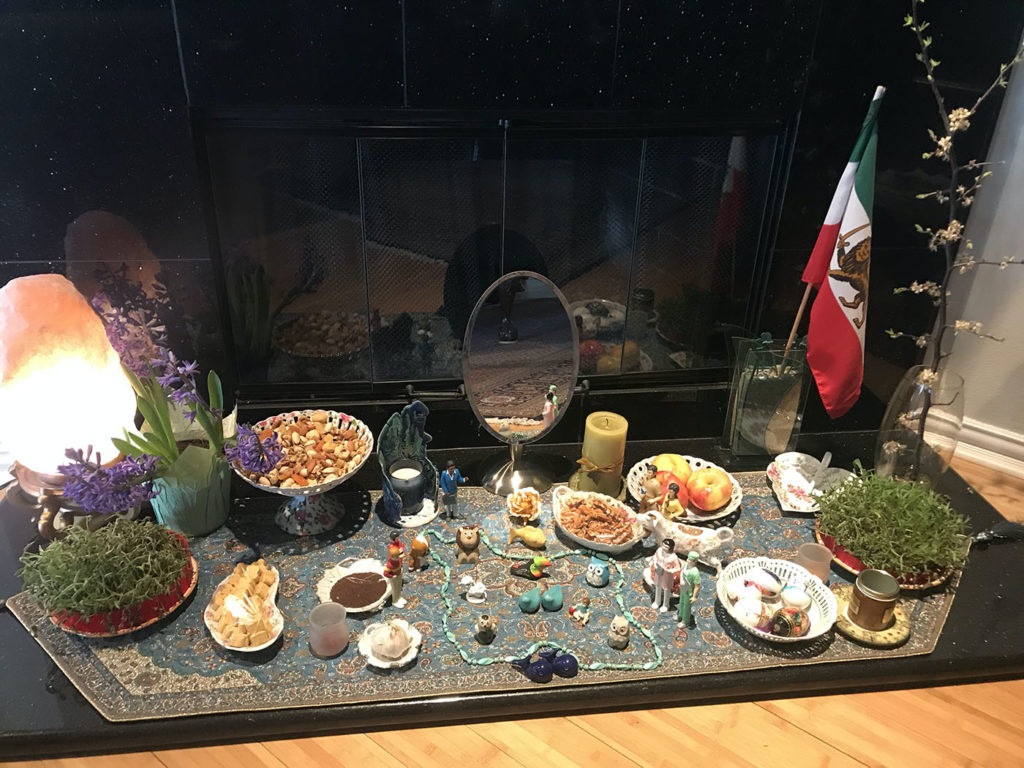
For the Iranian immigrants who arrive in America with an inherent sense of white identity, the contradiction and resulting ambiguity of being legally white but socially brown can be especially confounding. Iranian immigrants meet the traditional criteria of acceptability in white America; generally speaking, they are highly educated, work white collar jobs, and live middle-class lifestyles. Many have risen to prominence in their respective fields. Yet as a people we remain on the margins of acceptance in white America. The ramifications of marginalization ripple through generations, contradicting theories of race and assimilation that claim that successive immigrant generations will develop stronger attachments to whiteness as a social identity. Instead, first-generation Iranian parents are raising a second generation of hyphenated individuals who are increasingly aware that Iranians are not white. Not quite. Not in America.
If we Iranian Americans are to navigate America’s racialized rhetoric with integrity, we should acknowledge that whiteness and the privilege it espouses comes at the expense of a multitude of racialized groups — which could accurately be characterized as everyone else including ourselves. While we may take comfort in being legally included in the definition of white, American mainstream media continues to demonize Iran and Iranians.
The foundational idea that there is a group of original, ancestral Whites or Aryans — the Caucasians who descended from the Caucasus mountains — is ineffectual in any practical application, and potentially harmful to subsequent generations of Iranian Americans. No matter how precisely we frame our Aryan cultural heritage, Caucasian geographic origin and Indo-European language, or how strongly we desire the concomitance of a white racial identity, or how passionately we covet the acceptance of hegemonic white groups, these beliefs are not transmutable to life in the United States unless they are accepted by the hegemony and integrated into the status quo. Until then, Iranians will be perpetually negotiating and renegotiating our position on the periphery of whiteness.
There are ways in which we can help or hurt ourselves. It is problematic when Iranians selectively link to the ancestral Aryan narrative as a means to elevate their social status and separate themselves from stigmatized groups, especially if this separation is negotiated as being distinct from the racist identity framing used by white supremacists. As author Ta-Nehisi Coates says, “Race is the child of racism, not the father.” Given the inherent anti-Black sentiment that is prevalent in Iranian culture, any attempt by Iranians to claim Aryan heritage is vulnerable to being interpreted as a poorly-veiled if not transparent attempt to illegitimately secure the prestige of white privilege, and therefore labeled as a form of internal whitewashing that utilizes the same logical mechanisms that uphold white supremacy.
If we Iranian Americans are to navigate America’s racialized rhetoric with integrity, we should acknowledge that whiteness and the privilege it espouses comes at the expense of a multitude of racialized groups — which could accurately be characterized as everyone else including ourselves. While we may take comfort in being legally included in the definition of white, American mainstream media continues to demonize Iran and Iranians. As a result, American whiteness – its values, connotations, and all that it signifies – must remain incongruent with who we are. This is why, for myself and many of my peers, our identities align less with whiteness and more with those racialized groups. Comedian Negin Farsad relates this phenomenon in her book, How to Make White People Laugh, where she writes, “I’m actually an Iranian-American Muslim Female … But here’s the thing: I used to feel black.”
En route to defining what it means to be Iranian American there is a proximal objective of also describing what it means to be American. America, as a nation, is more than a geographic location or political entity. It is more than a combination of values. America is an idea. For many, that idea is rooted in the belief that anything is possible, and that perseverance and hard work can lead to immense achievement, material success, and social recognition. To the Iranian immigrants who fled the Islamic Republic, America might represent a safe harbor for human and civil rights, or the potential to enjoy cultural, religious, or political freedom.
Franklin D. Roosevelt famously said that “Americanism is a matter of the mind and the heart; Americanism is not and never was, a matter of race and ancestry. A good American is one who is loyal to this country and to our creed of liberty and democracy.” This rings true to many of us second-generation Iranians, for whom identity is a permutation of traditional cultural family values intertwined with American conceptions of personal liberty.
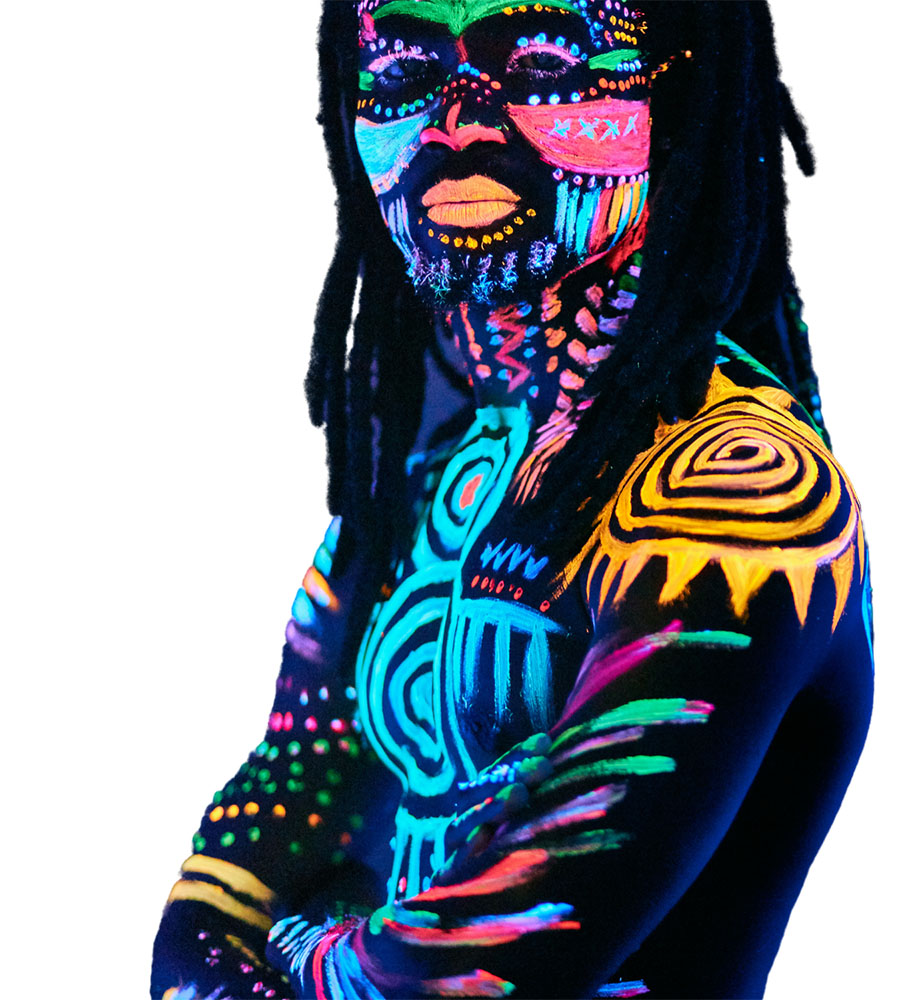
Of course, America is often characterized a melting pot — an experiment where a plethora of different traditions come together to form a common theme. By this definition, it is the perfect sandbox for ethno-futurism. In becoming American, we detach from our native cultures. We no longer have ancestors. We submit to the hegemonic nature of American popular culture and its shifting definitions of who we are. America’s own identity is an inherently transitional and divided one, and so concordantly in tempo we follow, ceaselessly diverging and melding, never coming to rest, and remaining forever divided within ourselves. As our identities are perpetually being negotiated and re-negotiated with each new interaction, how many hands touch us and influence our being? By the time we reach adulthood, our fully formed selves, are we truly any longer our own?
Back to that summer night in 2009, in my vulnerable state of post-athletic exhaustion, the question “where are you from?” caught me like a deer in headlights. I had no choice but to answer him honestly: “Iran,” I said, pronouncing it authentically as “e-ron.” He blinked back at me for a moment, then: “Oh,” he replied, “You mean I-ran?” I could only smile politely back at him. “Neat,” he said. My answer seemed to confirm something that he already knew: that I was indeed different from him and his friends. But them knowing the truth about me and who I was didn’t matter. I knew the truth about who I was. I just didn’t have the right paradigm to communicate it at the time. But I know better now.
A humanistic democratic culture should respect individual ethnic identities and encourage different cultural traditions to develop fully their potential for expression of the democratic ideals of freedom and equality. The ideal form of multiculturalism attempts to promote a changing understanding of our nation, its values, and its faults — but to what purpose? Iranian American identity represents a form of ethno-futurism in that is inherently liminal, transitional and therefore not easily defined. An ethno-futurist perspective asks: Who are we? Where do we come from? Where are we going? It seeks to answer these questions by creating a bridge between the national and the international, between and beyond the collective pasts and futures of our ethnic cultures as Iranians. It recognizes that we live in a fragmented space in-between Iran and America, and encourages us to create our own authentic cultures and identities, simply by being.
Framing the discussion of identity politics through ethno-futuristic contexts gives us Iranian Americans an opportunity to define ourselves in innovative ways that are authentic and independent of any prior connotations or restrictions surrounding race, culture or politics. To resolve the scrutiny of “Where are you from?” the ethno-futurist posits simply, “I am.”
Sources & Further Reading:
Avanessian, Armen, and Moalemi, Mahan. “Ethnofuturisms: Findings in Common and Conflicting Cultures.” Ethnofuturismen, Merve Verlag, 2018, pp. 8-39.
Dumas, Firoozeh. Funny in Farsi: A Memoir of Growing Up Iranian in America. Random House, 2007. 210pp. ISBN13: 978-0812968378.
Farsad, Negin. “I’m an Iranian American and I Used to Feel Black.” Time Magazine, June 8, 2016. Online.
Jobrani, Maz. I’m Not A Terrorist, But I’ve Played One On TV. Simon & Schuster, 2015. 240 pp. ISBN13: 978-1476749983.
Kreuger, Anders. “Ethno-Futurism: Leaning on the Past, Working for the Future.” Afterall Journal, 43, March 17, 2017. Online.
Maghbouleh, Neda. “From white to what? MENA and Iranian American non-white reflected race.” Ethic and Racial Studies, Vol. 3, No. 4, 2020, pp. 613-631.
Maghboueh, Neda. The Limits of Whiteness: Iranian Americans and the Everyday Politics of Race. Stanford University Press, 2017. 248 pp. ISBN: 9781503603370.
McKnight, Matt M. “Iranian in America: Immigrants share their hopes, fears, and frustrations.” Crosscut, January 20, 2020. Online.
Mechanic, Michael. “Bombs Sometimes, Kills Often, But Maz Jobrani Swears He Isn’t a Terrorist.” Mother Jones, February 3, 2015. Online.
Minniyakhmetova, Tatiana. “Ethno-Futurism as a New Ideology.” Politics, Feasts, Festivals, No. 4, 2014, pp. 217-223.
Mostofi, Nilou. “Who We Are: The Perplexity of Iranian Identity.” The Sociological Quarterly, Vol. 44, No. 4, Autumn 2003, pp. 681-703.
Nasir, Noreen, and Contreras, Russell, “Renewed Political Tensions Have Iranian Americans Identifying As People Of Color.” WBEZ Chicago, February 3, 2020. Online.



